Taipei City councilors are to form a nonpartisan “friends of Japan” alliance to deepen mutual ties on a city level, Taipei Mayor Ko Wen-je (柯文哲) said, while his Japan policies would be similar to those expected of Democratic Progressive Party (DPP) president-elect Tsai Ing-wen (蔡英文).
Ko made the remarks yesterday in response to media queries about whether the hospitality he had received from Japanese dignitaries since arriving in Tokyo on Sunday meant he would endeavor to further relations between Taiwan and Japan, given warm receptions received by himself and Tsai.
He said he hopes that Taipei and Tokyo would boost their level of exchanges with the establishment of the cross-party alliance, thereby improving bilateral ties between the two nations.
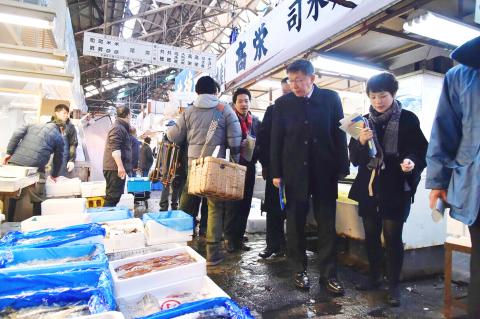
Photo: CNA
DPP Taipei City councilor Liu Yao-jen (劉耀仁), a member of Ko’s delegation, said Japan’s mentality toward Taiwan had “changed for the better” thanks to the shift in political power after the presidential election on Jan. 16, while the DPP Taipei City Council caucus would seek to build on the newfound momentum to further mutual exchanges by lobbying for the establishment of the alliance.
Earlier in the day, Ko met with Tokyo Governor Yoichi Masuzoe to discuss how to address the issue of aging populations — a challenge for both Taiwan and Japan — among other policies.
Citing experience as Japanese minister of health, labor and welfare, Masuzoe said that he had a good grasp of issues regarding social security, while both the Tokyo Municipal Government and the Japanese government would be happy to provide Taiwan with assistance.
Masuzoe welcomed the idea of promoting exchanges between the Taipei City Council and the Tokyo Municipal Assembly, saying that he looked forward to establishing swift correspondence between the two bodies to be able to respond better to emergencies.
Prior to the meeting, Masuzoe led a tour of his collection of Taiwanese souvenirs, including a T-shirt commemorating the support Taiwan gave Japan in the aftermath of the Tohoku earthquake and tsunami in 2011, which sports words expressing Japanese gratitude.
Ko invited Masuzoe to visit Taiwan, where he said he would extend his hospitality to his Japanese counterpart, adding that about 3.5 million Taiwanese visited Japan last year, but only about 1.6 million Japanese visited Taiwan.
Ko said that Taipei’s slogan to promote tourism is: “One more person. One more day,” and that “through more exchanges, more friendships can be fostered.”
Also yesterday, Ko visited the Tokyo Rinkai Disaster Prevention Park, where he experienced an earthquake simulator while learning about the city’s disaster prevention measures.
He said he had ordered the Taipei City Department of Education to prepare a curriculum by September that would educate students from elementary schools to high schools on how to protect themselves from natural disasters, fires, epidemics, sexual assault and violence.
Ko said he would follow Tokyo’s policy of issuing disaster prevention brochures to its residents by preparing an online brochure for Taipei residents to download, saving on printing costs.
Asked whether public housing units in Taipei would be as resilient in earthquakes as Japanese buildings, Ko said that one of the key purposes of Taipei’s urban renewal projects is to boost the “seismic response” of structures, with newly constructed public housing buildings boasting better seismic preparedness.
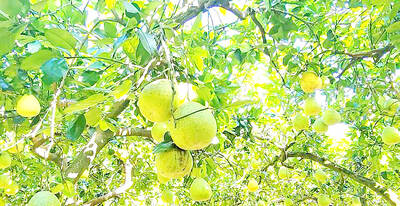
NEW AGREEMENT: Malaysia approved imports last year after nearly two years of negotiations and inspections to meet quarantine requirements, officials said Up to 3.6 tonnes of pomeloes from Taiwan cleared Malaysian customs on Friday, in the first shipment of Taiwanese pomeloes to Malaysia. Taiwan-grown pomeloes are popular in domestic and overseas markets for their tender and juicy taste, the Ministry of Agriculture’s Animal and Plant Health Inspection Agency said. The fruit is already exported to Japan, Canada, Hong Kong, Singapore and the Philippines, it added. The agency began applying for access to the Malaysian market in 2023, compiling data on climate suitability, pests and diseases, and post-harvest handling, while also engaging in nearly two years of negotiations with Malaysian authorities and submitting supplementary
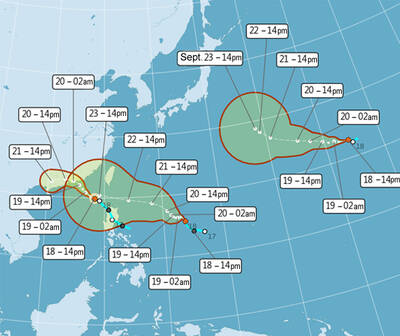
PEAK MONTHS: Data showed that on average 25 to 27 typhoons formed in the Pacific and South China seas annually, with about four forming per month in July and October One of three tropical depressions in the Pacific strengthened into a typhoon yesterday afternoon, while two others are expected to become typhoons by today, Central Weather Administration (CWA) forecaster Lee Ming-hsiang (李名翔) said yesterday. The outer circulation of Tropical Depression No. 20, now Typhoon Mitag, has brought light rain to Hualien, Taitung and areas in the south, Lee said, adding that as of 2pm yesterday, Mitag was moving west-northwest at 16kph, but is not expected to directly affect Taiwan. It was possible that Tropical Depression No. 21 would become a typhoon as soon as last night, he said. It was moving in a
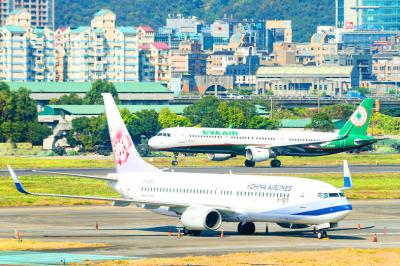
Tigerair Taiwan and China Airlines (CAL) today announced that several international flights were canceled or rescheduled due to Typhoon Ragasa. The Central Weather Administration (CWA) has maintained sea and land warnings for the typhoon. Its storm circle reached the Hengchun Peninsula (恆春半島) on Taiwan's southern tip at 11am today. Tigerair Taiwan said it canceled Monday's IT551/IT552 Taoyuan-Da Nang, IT606/IT607 Taoyuan-Busan and IT602 Taoyuan-Seoul Incheon flights. Tomorrow, cancelations include IT603 Seoul Incheon-Taoyuan, as well as flights between Taoyuan and Sapporo, Osaka, Tokyo Narita, Okinawa, Fukuoka, Saga, Tokyo Haneda, Nagoya, Asahikawa and Jeju. On Wednesday, the IT321/IT322 Kaohsiung-Macau round-trip would also be canceled. CAL announced that today's
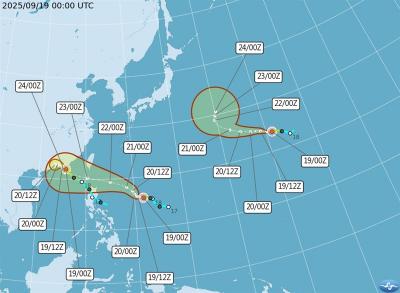
Three tropical depressions yesterday intensified into tropical storms, with one likely to affect Taiwan as a typhoon, the Central Weather Administration (CWA) said. The three storms, named Mitag, Ragasa and Neoguri, were designated as storms No. 17 to 19 for this year, the CWA said. Projected routes indicate that Ragasa is most likely to affect Taiwan, it said. As of 2am today, Ragasa was 1,370km east-southeast of Oluanpi (鵝鑾鼻) on the southernmost tip of Taiwan. It was moving west-northwest before turning northwest, slowing from 11kph to 6kph, the agency said. A sea warning for Ragasa is unlikely before Sunday afternoon, but its outer rim